So many moms out there experience these debilitating headaches, and so many of us find little relief. For those of you who have never had a migraine, here is a brief description: extreme, throbbing pain, usually on one side the head, that is relentless. It pounds away minute by minute and is accompanied by heightened sensitivity to light, sound, and even smell. Almost anything will make it worse. Some experience nausea or vomit, some have a weird halo (or “aura”) that obscures their vision, others must hide away in a dark room, and the worst must go to the E.R. because the pain is so great. Most get no relief until they go to bed that night and hope it’s gone in the morning. For many sufferers, it has miraculously disappeared after a good ni ght’s sleep; for others, it can continue for two to three more days. The pain can be so excruciating that most people are willing try anything to make it go away, and most things don’t work. Adding children to the mix (especially young and needy ones) when a migraine hits tests the strength of the strongest moms!
ght’s sleep; for others, it can continue for two to three more days. The pain can be so excruciating that most people are willing try anything to make it go away, and most things don’t work. Adding children to the mix (especially young and needy ones) when a migraine hits tests the strength of the strongest moms!
I have suffered from migraines since the age of 26 (I am now 42). I have researched the topic, tried almost any and every suggested remedy, gone to doctors, acupuncturists, and herbalists. Here is what I learned over the years to hopefully help anyone with these mega-headache blues:
Causes and Triggers:
Following are some common causes and triggers that contribute to a migraine occurring. Note that it isn’t just one of these that will cause the headache, it is typically a combination of them. I spent many years trying to find that one culprit, thinking that I could eliminate that and be cured; and it took me a long time to realize that it’s not the case. Too many triggers experienced at the same time will cause that dreaded pounding to start; there isn’t one source.
– Migraines are typically hereditary. If you get migraines and start asking around your family members, you’ll probably find that someone else gets them too. My dad does occasionally, as well as my aunt who experiences them often, and now my younger cousins. Unfortunately, we’re a migraine family, but they also have been a good resource for me when trying to discover my common triggers. Often, they are the same.
– Getting too little sleep. This is a big contributor to the onset of a migraine, and I know that if I have multiple nights of no sleep, a migraine is sure to follow. Sleep can be nearly impossible with little ones, but try to make it up where you can. Go to bed when your babies do, nap when they do too, or try to find some time during lunch breaks to just close your eyes and rest that poor brain.
– Having too much caffeine. Caffeine, our lifesaver in the morning or when we don’t get that beloved sleep, can also bring on a migraine faster. It constricts your blood vessels and increases your heart rate. It feels good in the moment, but can also make that incessant pounding worse. I finally kicked the coffee habit after many loving years with my darling java, but it has really helped. I still drink tea, a combination of black and green, so I still intake caffeine, but not at the same rate or in the same concentration.
– Not eating regularly, or drinking enough water. In combination with healthy sleep, migraine sufferers also benefit from eating at least every three hours, as well as drinking plenty of fluids (ideally water). The drop in blood sugar really affects those with migraines. Lacking these two essentials just adds fuel to the migraine fire.
– Menstrual cycle migraines. Some women find that the dips and dives in their hormones due to their period cause migraines to regularly occur. At least two moms I know have found that their menstrual cycle is the major contributor to their monthly migraine.
– An onslaught of stress. We all know that stress is unavoidable in our lives as moms, but an influx due to family problems, illnesses, financial worries, and more can add up fast. Taking a break with some relaxation or even a short meditation can help. It might not solve your problems, but can give you a little distance for a short while, and maybe keep that headache at bay.
– Red wine, some cheeses, dark chocolate. That just doesn’t seem fair, does it? All of those delicious foods can cause migraines? For some, yes. Red wine has been a culprit for a long time. Tannins and a substance called tyramine is supposed to contribute to those who are prone to migraines. The same goes for aged cheeses, they contain tyramine, which helps that headache along. Dark chocolate also contains it, and chocolate has caffeine from the higher content of cocoa. My aunt discovered that dark chocolate is her biggest trigger (along with caffeine,) so she avoids it completely.
– Food allergies or intolerance. Foods that your body cannot tolerate or has a reaction to will cause inflammation in your body. Inflammation can help that migraine come into being. After doing a food intolerance test, I discovered that I am intolerant to milk, lactose, cheese, and many types of seeds. I have completely cut those out of my diet and seen positive results.
– Weather changes. This trigger might seem a little silly, but it can be a contributor. Drops in the barometer mean changes in pressure, which can be painful to an already sensitive head. Major changes due to the changing of seasons affect my headaches, as well as visiting other places where the humidity is vastly different (like the southern states). There isn’t much that we can do about the weather! But being aware of it might cause you to not have that extra cup of coffee or stay up a little later.
How to help your head:
– Healthy lifestyle changes: do your best to get enough sleep, don’t overdo it on caffeine (or drink it at all if possible), always be aware of when you ate and when to eat again (do not go over three hours, carry snacks in your purse, always have water with you).
– Track your menstrual cycle along with your headaches. If you notice a pattern, avoid your other triggers when you know might start your period (or whenever headaches occur in your cycle). You also can visit your doctor to discuss trying birth control pills, which has helped those moms I know who get cycle-related migraines.
– Keep a headache log and note any patterns: did you have red wine the night before, what did you eat, did you get little 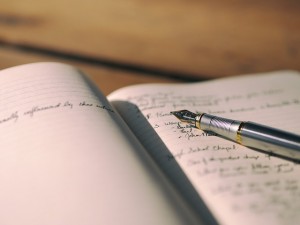 sleep, are you particularly stressed, is your period coming or did it recently end? The goal is to narrow down any little pattern. That will help you untangle the triggers that bring migraines on.
sleep, are you particularly stressed, is your period coming or did it recently end? The goal is to narrow down any little pattern. That will help you untangle the triggers that bring migraines on.
– Get a food intolerance test. Knowing what foods your body reacts to can help your entire system (from your G.I. to your head). I had no clue that my body doesn’t tolerate milk products, and I’ve been eating them my entire life! You may not like the answers, but if you’re desperate for relief, you might be willing to try.
– See your doctor to get a prescription for migraine medication. There are options out there for us migraine sufferers and I have tried many of them. There are meds to take when a migraine starts to attack and there are some to take on a daily basis to ward them off. Choosing to take medication is personal and entirely up to you, but know that options exist, some of them might be helpful.
– See an acupuncturist who can get you back in balance. Acupuncture is beneficial for chronic pain or any other problem, which is often due to an imbalance somewhere in your body. The right acupuncturist can treat this imbalance, and in turn, alleviate some of your headaches, or make the pain less severe when they occur.
What worked for me:
First, please note that everyone is different and what has worked for me may not work you in the same way. Everyone’s migraine journey is unique; still, some of my solutions might help you too.
– Adequate sleep, eating healthily, and drinking lots of water. If I miss out on any of these, especially in combination, I’m in trouble.
– Exercising on a regular basis – it helps my body and brain, even short walks are something.
– Changing my daily diet. After getting the food intolerance test and cutting out my body’s major reactors, in my case, milk, lactose, many seeds, and some alcohol, I noticed a marked difference in my headaches. As a family we also cut out gluten (due to my daughter’s intolerance), and that has helped too.
– Acupuncture – it took me awhile to find the right practitioner (every acupuncturist has their own theory for your ailment, like a doctor), but once I did, she worked wonders in clearing out and detoxing my body and helping my energy level overall, especially my headaches. I went from having migraines a few times a month to having one sporadically every four or five months. She worked wonders for me, but again, everyone’s experience is different.
– Prescription migraine medication – I have tried a variety of these as well, some with varying success. In the end, I take a common medication (Imitrex) when I feel a migraine coming on. Since I have eliminated most triggers, that medication usually stops the migraine before ballooning into a full-blown attack. Prior to my lifestyle changes and acupuncture, the medication didn’t always work and I would take it much more frequently than I liked. Now, I am not waiting anxiously to fill my prescription.
The migraine problem is a hard one to solve, and it might be that you will always be prone to them, but know that you can cut out some of the major contributing factors and, if anything, reduce the times that you get them (and the severity). Good luck, migraine mamas!
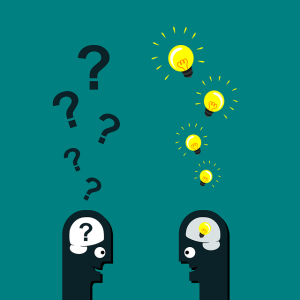 that each hemisphere does have a particular focus, but that creative people are more “right-brained” and “left brained” are more logical is not true. Stating a study that involved reviewing over a thousand MRI brain scans, it was determined there is no greater strength of each hemisphere per individual. Dr. Jandial’s sums it up, “In other words, math geeks and computer programmers use both sides of their brain equally, as do painters and poets.”
that each hemisphere does have a particular focus, but that creative people are more “right-brained” and “left brained” are more logical is not true. Stating a study that involved reviewing over a thousand MRI brain scans, it was determined there is no greater strength of each hemisphere per individual. Dr. Jandial’s sums it up, “In other words, math geeks and computer programmers use both sides of their brain equally, as do painters and poets.” desires is a sure way to discover your inner creative self.” Science backs this up by again studying MRI scans that show connections between different areas of the brain when engaging in day dreaming. He says that creativity requires “a balance between homing in and spacing out, between mastering material and going off on a tangent.” So, go ahead and stare off into space. It’s good for you!
desires is a sure way to discover your inner creative self.” Science backs this up by again studying MRI scans that show connections between different areas of the brain when engaging in day dreaming. He says that creativity requires “a balance between homing in and spacing out, between mastering material and going off on a tangent.” So, go ahead and stare off into space. It’s good for you! mes and free play allow kids to explore all kinds of different worlds and ideas that they wouldn’t necessarily discover while staring at a tablet or going to a structured karate class. And adults can benefit too. Play (in however you define it) allows a freedom that we don’t experience while blindly watching TV or continuously checking email.
mes and free play allow kids to explore all kinds of different worlds and ideas that they wouldn’t necessarily discover while staring at a tablet or going to a structured karate class. And adults can benefit too. Play (in however you define it) allows a freedom that we don’t experience while blindly watching TV or continuously checking email.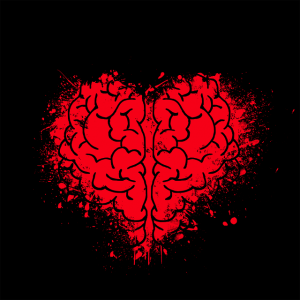 greater things.”
greater things.”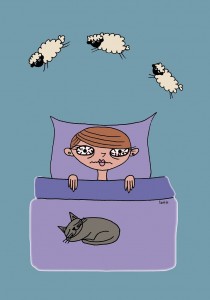 darn elusive thing that only gets more challenging as we age; how do we get enough of it, especially when it evades us at 3AM? This is a question I’ve been pondering between two and five in the morning for the last few years. The frustration, exhaustion, and anger I’ve felt from time to time during my bouts of insomnia have almost sent me over the edge.
darn elusive thing that only gets more challenging as we age; how do we get enough of it, especially when it evades us at 3AM? This is a question I’ve been pondering between two and five in the morning for the last few years. The frustration, exhaustion, and anger I’ve felt from time to time during my bouts of insomnia have almost sent me over the edge. often need less than we think: “Sleep is similar to food in that our body also needs a core amount of food to function. Most individuals, however, eat more than their core requirements to feel good.” I can honestly say that I do not feel good with only five and a half hours of sleep, but at least I know now that I can get through the day (although with probable “mood impairment,” he notes).
often need less than we think: “Sleep is similar to food in that our body also needs a core amount of food to function. Most individuals, however, eat more than their core requirements to feel good.” I can honestly say that I do not feel good with only five and a half hours of sleep, but at least I know now that I can get through the day (although with probable “mood impairment,” he notes).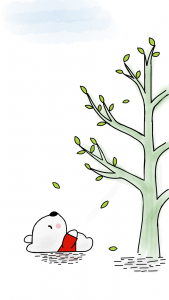 ly have not solved my insomnia problem entirely, but his book taught me a few things I did not know about sleep and how I can help myself when I can’t get it. It is certainly a work in progress for me, but I do feel better off than I did a few months ago. If only I could sleep like my son who literally closes his eyes and stays asleep all night, almost nothing wakes him, and he comes downstairs in the mornings refreshed and energized.
ly have not solved my insomnia problem entirely, but his book taught me a few things I did not know about sleep and how I can help myself when I can’t get it. It is certainly a work in progress for me, but I do feel better off than I did a few months ago. If only I could sleep like my son who literally closes his eyes and stays asleep all night, almost nothing wakes him, and he comes downstairs in the mornings refreshed and energized.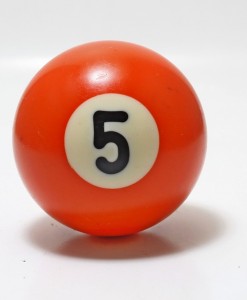 That title is a little misleading, I’ll admit, but during my latest library book reading journey (yes, a library book, my dentist acted like I was holding an ancient artifact – “is that a…library book?” he asked) – excuse that digression – I came across Mel Robbins and her 5 Second Rule (The 5 Second Rule: Transform your Life, Work, and Confidence with Everyday Courage). In a nutshell, she claims that whatever your goals are, your fear to act, your anxiety, all can be helped by the 5 Second Rule. (And it has nothing to do with the rule of eating something off the floor within five seconds.)
That title is a little misleading, I’ll admit, but during my latest library book reading journey (yes, a library book, my dentist acted like I was holding an ancient artifact – “is that a…library book?” he asked) – excuse that digression – I came across Mel Robbins and her 5 Second Rule (The 5 Second Rule: Transform your Life, Work, and Confidence with Everyday Courage). In a nutshell, she claims that whatever your goals are, your fear to act, your anxiety, all can be helped by the 5 Second Rule. (And it has nothing to do with the rule of eating something off the floor within five seconds.)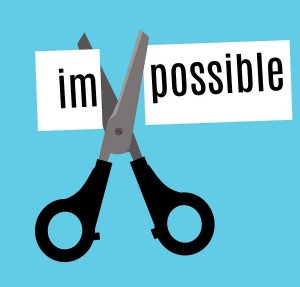 afraid of flying for most of her life, but realized that if she applied the Rule once an anxious thought entered, then physically moved her body to interrupt her brain, along with picturing an “anchoring thought,” a future scene she was looking forward to (for example, flying home to her family and picturing them all eating dinner together once she got back), she was able to beat this overwhelming fear. She says she doesn’t even think about her flying worries anymore. “Everyday life is full of moments that are scary, uncertain, and difficult. Facing these moments and unlocking the opportunity, magic, and joy in your life requires tremendous courage.” For her, the 5 Second Rule forced her to face those moments and in doing so, found herself being courageous. “The more that you practice acts of courage, the more that you will believe you are in control of your life, and as a result, the more confident that you will become. Even when what you need to do scares you to death, the Rule helps you take courageous action.”
afraid of flying for most of her life, but realized that if she applied the Rule once an anxious thought entered, then physically moved her body to interrupt her brain, along with picturing an “anchoring thought,” a future scene she was looking forward to (for example, flying home to her family and picturing them all eating dinner together once she got back), she was able to beat this overwhelming fear. She says she doesn’t even think about her flying worries anymore. “Everyday life is full of moments that are scary, uncertain, and difficult. Facing these moments and unlocking the opportunity, magic, and joy in your life requires tremendous courage.” For her, the 5 Second Rule forced her to face those moments and in doing so, found herself being courageous. “The more that you practice acts of courage, the more that you will believe you are in control of your life, and as a result, the more confident that you will become. Even when what you need to do scares you to death, the Rule helps you take courageous action.”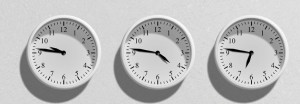 eeping, and activity. And living according to them is better for your health overall, including maintaining or losing weight, and getting beneficial sleep.
eeping, and activity. And living according to them is better for your health overall, including maintaining or losing weight, and getting beneficial sleep.
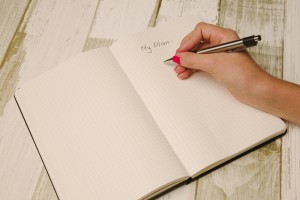 kids’ screen time, monitor my own screen time, date night once a week…the list goes on and on. Somewhere in my head I think, yes, that’s it, once I consistently do all those things, my life will be easy and good, even perfect.
kids’ screen time, monitor my own screen time, date night once a week…the list goes on and on. Somewhere in my head I think, yes, that’s it, once I consistently do all those things, my life will be easy and good, even perfect.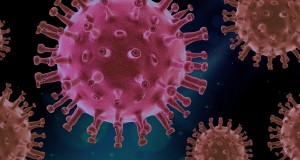 The title says it all, I caught COVID-19 (it was well over a month ago so don’t worry if I’ve been in your presence lately). Yes, I was just as surprised as you are. I live in California, which is a hotbed of cases, but where I live in NorCal, there haven’t been too many, especially in my county in the sticks. And, yes, I took the precautions we’re all told to take: wear the mask, hand sanitize, wash my hands, avoid touching my face, etc, etc, but I caught it anyway.
The title says it all, I caught COVID-19 (it was well over a month ago so don’t worry if I’ve been in your presence lately). Yes, I was just as surprised as you are. I live in California, which is a hotbed of cases, but where I live in NorCal, there haven’t been too many, especially in my county in the sticks. And, yes, I took the precautions we’re all told to take: wear the mask, hand sanitize, wash my hands, avoid touching my face, etc, etc, but I caught it anyway.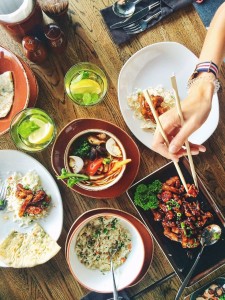 everything you ever loved about eating. It can be torturous and grueling at times, but it does the job. It clears out the junk I’ve been consuming and the habits that started forming as I reached for another dessert, another glass of wine, another handful of chips… Once the cleanse is over, I am mostly in the groove of eating well again.
everything you ever loved about eating. It can be torturous and grueling at times, but it does the job. It clears out the junk I’ve been consuming and the habits that started forming as I reached for another dessert, another glass of wine, another handful of chips… Once the cleanse is over, I am mostly in the groove of eating well again.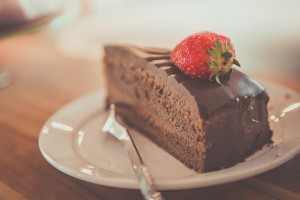 went on and she recognized the pre-programmed messages in her head, she let herself just eat what she wanted. She says that when she wanted peanut M&M’s she would have a few, not the whole bag, and be satisfied. She not only lost weight during this year-long experiment, but said the most significant change is that she doesn’t waste “mental energy agonizing over food or body size anymore.” She says she still stresses over potato chips sometimes, but she doesn’t guilt herself or “promise to make up for it.”
went on and she recognized the pre-programmed messages in her head, she let herself just eat what she wanted. She says that when she wanted peanut M&M’s she would have a few, not the whole bag, and be satisfied. She not only lost weight during this year-long experiment, but said the most significant change is that she doesn’t waste “mental energy agonizing over food or body size anymore.” She says she still stresses over potato chips sometimes, but she doesn’t guilt herself or “promise to make up for it.”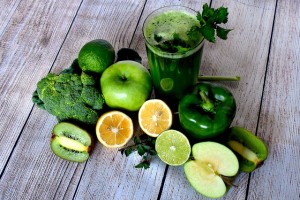 For those who don’t know about this cleanse, the following foods are cut out for thirty days: wheat, sugar, dairy, peanuts, corn, soy, caffeine (except for green tea), canola oil (which is in many foods and is inflammatory), all vinegar except apple cider, pork, beef (except grass-fed, once a week), starchy foods (like potatoes), and sugary fruits (bananas, pineapple, etc). Why, you might ask, would anyone voluntarily cut out ALL of these foods? And, what does that leave a person to eat?! I did this cleanse again because last year it helped with my migraines, my husband did it to lose weight (and he’s a nice, supportive guy in that way), it’s also a good way to get rid of the guilt-ridden pounds and general yuckiness felt after overindulging during the holiday season (which we both did). Those who joined us did it for a variety of reasons: for some it was to lose weight, others wanted to get rid of the guilt too, some wanted to get a good start on the year by eating right, and one other person had mysterious pain issues and wanted to see if a diet change would help alleviate some of the pain.
For those who don’t know about this cleanse, the following foods are cut out for thirty days: wheat, sugar, dairy, peanuts, corn, soy, caffeine (except for green tea), canola oil (which is in many foods and is inflammatory), all vinegar except apple cider, pork, beef (except grass-fed, once a week), starchy foods (like potatoes), and sugary fruits (bananas, pineapple, etc). Why, you might ask, would anyone voluntarily cut out ALL of these foods? And, what does that leave a person to eat?! I did this cleanse again because last year it helped with my migraines, my husband did it to lose weight (and he’s a nice, supportive guy in that way), it’s also a good way to get rid of the guilt-ridden pounds and general yuckiness felt after overindulging during the holiday season (which we both did). Those who joined us did it for a variety of reasons: for some it was to lose weight, others wanted to get rid of the guilt too, some wanted to get a good start on the year by eating right, and one other person had mysterious pain issues and wanted to see if a diet change would help alleviate some of the pain.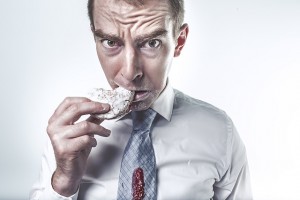
 ght’s sleep; for others, it can continue for two to three more days. The pain can be so excruciating that most people are willing try anything to make it go away, and most things don’t work. Adding children to the mix (especially young and needy ones) when a migraine hits tests the strength of the strongest moms!
ght’s sleep; for others, it can continue for two to three more days. The pain can be so excruciating that most people are willing try anything to make it go away, and most things don’t work. Adding children to the mix (especially young and needy ones) when a migraine hits tests the strength of the strongest moms! sleep, are you particularly stressed, is your period coming or did it recently end? The goal is to narrow down any little pattern. That will help you untangle the triggers that bring migraines on.
sleep, are you particularly stressed, is your period coming or did it recently end? The goal is to narrow down any little pattern. That will help you untangle the triggers that bring migraines on.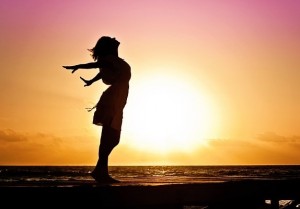 to think, “now what?” Many of us have experienced this thought. We had a problem or a challenge, set a goal, succeed, then felt a little…empty, sad, or possibly depressed.
to think, “now what?” Many of us have experienced this thought. We had a problem or a challenge, set a goal, succeed, then felt a little…empty, sad, or possibly depressed. t it isn’t always helpful think about other people and their bigger problems because it makes me feel petty and small about my own (i.e. my “first world” problems). But, good or bad, we all have problems; that is the nature of life. And maybe giving ourselves the perspective of knowing that other people have faced problems, similar or even worse, and they got through them, therefore, I can too. It might just be the little lift we need to feel better.
t it isn’t always helpful think about other people and their bigger problems because it makes me feel petty and small about my own (i.e. my “first world” problems). But, good or bad, we all have problems; that is the nature of life. And maybe giving ourselves the perspective of knowing that other people have faced problems, similar or even worse, and they got through them, therefore, I can too. It might just be the little lift we need to feel better.